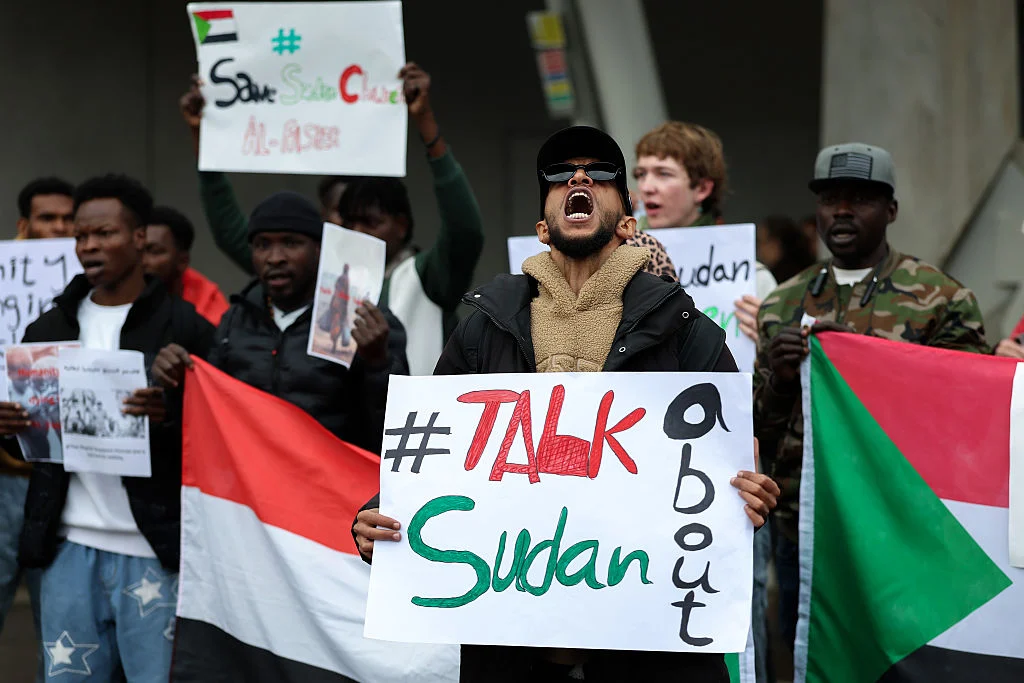The Crisis in Darfur: Satellite Images Reveal Gruesome Truths
Recent satellite images taken over el-Fasher, a city in Sudan’s Darfur region, have unveiled a harrowing reality: mass burials appear to be occurring following the seizure of the city by the notorious paramilitary group, the Rapid Support Forces (RSF). Analyzed by the Yale School of Public Health’s Humanitarian Research Lab and corroborated by other media sources, these images raise alarm over the escalating violence in the region.
An Alarming Context
As the war in Sudan enters its third year, local and international actors are increasingly horrified by the rising death toll. Reports of a drone strike targeting a funeral in el-Obeid—resulting in at least 40 deaths—highlight the increasingly violent atmosphere enveloping the region. These chilling events contribute to a humanitarian crisis where more than 40,000 lives have been lost since the conflict began in April 2023, with many fearing that the actual number could be far higher.
Evidence of Mass Burials
Photographs captured by Vantor, a Colorado-based imaging firm, indicate that mass graves were dug and subsequently covered in el-Fasher. The Yale lab identified two specific locations of interest: near a mosque adjacent to the Saudi hospital—where reports claim 460 people were killed—and by a former children’s hospital used as a prison by the RSF. The complexities of burial practices make it challenging to ascertain an exact body count from these sites, as those responsible for disposing of the remains often layer the bodies.
Visual Documentation
The Associated Press accessed similar satellite imagery and confirmed findings consistent with the Yale report, including soil disturbances indicative of recent digging. Initial examination had even revealed white objects—likely corpses—on the grounds of the Saudi hospital and near the children’s hospital, alongside visible blood stains.
Human Experiences Amidst the Violence
Eyewitness accounts from individuals fleeing el-Fasher paint a nightmarish picture of the RSF’s assault. Despite the RSF’s denials of involvement in any killings at the Saudi hospital, the narratives of survivors and documented footage tell a different story. Reports include graphic instances of RSF fighters moving among bodies and executing unarmed individuals.
The Perils of Communication
Communications in Darfur remain poor, complicating the assessment of the overall scale of violence. Witness statements indicate severe human rights violations, exemplified by the reported killing of Dr. Adam Ibrahim Ismail, a local physician targeted amidst the chaos. The Sudan Doctors’ Network condemned this act as a “heinous crime” aimed at medical professionals.
International Response and Calls for Accountability
U.N. Secretary-General António Guterres has urged for “mechanisms of accountability” in light of the ongoing atrocities, emphasizing the need for justice in such a troubled landscape. The mass burials complicate investigations, as bodies are buried in areas now controlled by those accused of the crimes.
Rising Conflict and Humanitarian Crisis
The conflict between the RSF and the Sudanese military has wreaked havoc among civilians. Reports from humanitarian organizations indicate that over 14 million individuals have been displaced, and regions like Darfur and Kordofan are experiencing severe famine. Aid groups, such as the World Food Program, report deteriorating living conditions and worsening malnutrition, with some families going days without food.
The Use of Drones in Warfare
Drone attacks have also become a deadly tool for the RSF. The recent drone strike in el-Obeid, attributed by local media to the RSF, is a stark reminder of the deadly technological advancements in modern warfare and their impact on civilians. The RSF may not claim responsibility publicly, but their heavily documented use of drones presents a clear pattern of violence and disregard for human life.
The unfolding tragedy in el-Fasher and other parts of Sudan is a heartbreaking testament to the enduring conflicts that plague the region, leaving scars that will take years, if not decades, to heal. The continuous stream of satellite imagery and firsthand accounts underscores not only the immediate dangers faced by civilians but also the critical need for international attention and intervention.



